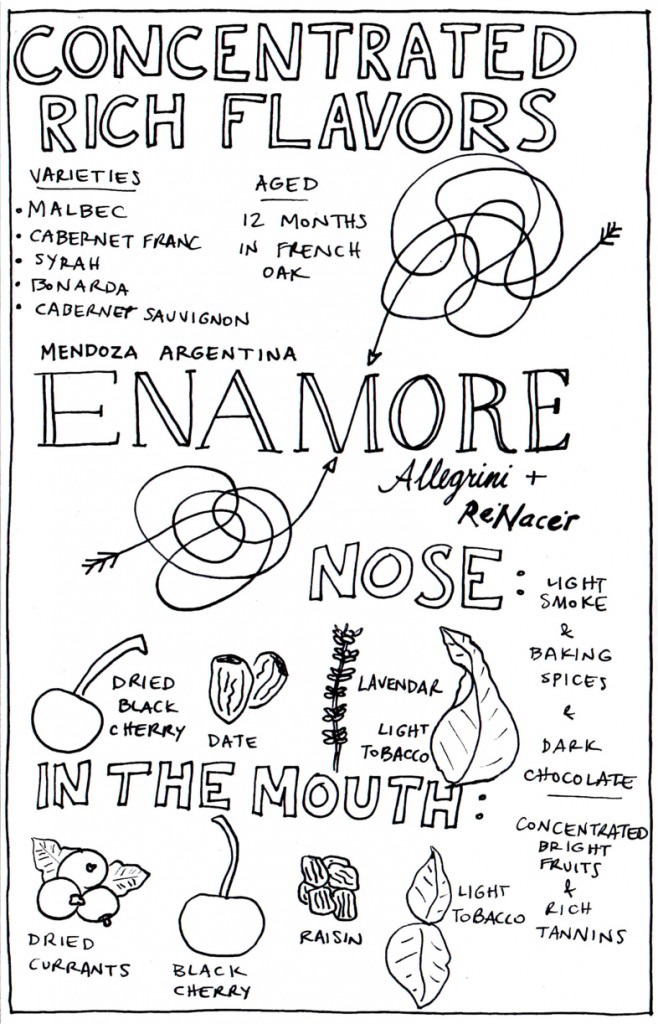Straw Wine Production: How Amarone is Made
click on comic to enlarge
Straw Wine is made around the world in warmer climates with dry skies. The grapes need the higher temperatures for proper drying, and lack of rain to avoid mildew.
In the case of Italian Amarone, straw wines take upwards of half a year just to properly raisin. The area of Argentina where Enamore is made, however, needs a mere half a month to dry.
In either case, the result is an incredibly low yield wine demanding special attention by the wine makers, and offering rich tannins, and concentrated dried fruit flavors. The time spent in oak impacts the level of spice and smoke, and the years of aging increase the concentration and balance the tannins.
Wine Reviews
These two wines are both made in a straw wine style, but with differing grapes, and in different parts of the world. While both spend time in oak, the Italian wine spends far more, and is held for several years before release is allowed. As a result, these two wines went on the market around similar time period.
Villalta 2006 Amarone Single Vineyard ‘I Comunali’ Estate Bottled
click on comic to enlarge
The Villalta 2006 Amarone depends on grapes selected entirely from one vineyard. The blend is classic of the Valpolicella region–Corvina, Rondilla, Molinara, and Rossignola. After fermentation the wine is aged in oak barrels for four years, then in bottle for one.
The tannins here are wonderfully rich, and want air to breathe and open up. Decant for upwards of two hours. The flavors are dried, rich fruits with a pleasing balance of spice, and a lovely smooth texture. This is a wine to get ready for, and then to sit down and enjoy. It is well-aged and ready to drink now, but can also handle plenty of aging. There is greater complexity in this wine than in the Enamore, and deeper, darker, dried fruit flavors.
Enamore 2009 Amarone Style by Allegrini and Renacer
click on comic to enlarge
The Enamore draws its combination of brighter and dried fruit flavors from a blend of Malbec, Cabernet Franc, Syrah, Bonarda, and Cabernet Sauvignon. The area of Argentina in which the wine is produced is significantly drier and warmer than Valpolicella Region of Italy, allowing for the drying process to occur in a mere half month. After fermentation, the wine is then aged in oak for 12 months.
The flavors here are brighter, and younger than in the case of the Amarone. There is a combination of both fresh, and dried fruit flavors, with the nose showing some earth that the mouth does not carry. Additionally there is some light tobacco and smoke on the nose that shows less readily in the mouth. While the amarone method tends to reduce the acidity of a wine, the fast aging of these grapes, and the grape selection leave a slightly higher acid level in this wine than the amarone, though the tannins are lower.
***
Copyright 2011 all rights reserved. When sharing or forwarding, please attribute to WakawakaWineReviews.com




[…] Calabrone is an expression of the Bastianich love for Amarone style wines. It is made only in the best vintages, with so far 6 of the 12 vintages being made Calabrone. The […]